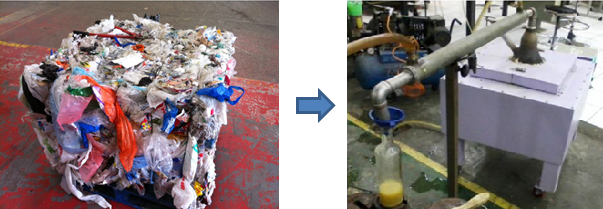Energy Recovery From Plastic Waste Using Pyrolysis Technology

The disposal of plastic waste is a growing major environmental problem in Australia. The rapid consumption rate of plastic has led to an increasing amount of waste and this causes greater problems for disposal. One promising alternative for the reuse of plastic waste is pyrolysis, which transforms the plastic waste to useful chemical products or fuels. Designing such waste to energy plants is driven by researchers, industrial people and government with both economic and environmental goals. This project investigates the potential calorific value of plastic waste in order to utilise as a source of energy and creating value-added materials by means of Thermodynamic modelling.
The work focuses on exploring the technical and economic feasibility of pyrolysis technique to convert mixed plastic waste into liquid fuel. High density polyethylene (HDPE), low density polyethylene (LDPE), polystyrene (PS), polypropylene (PP), polyethylene terephthalate (PET), and polyvinyl chloride (PVC) were the thermoplastics used. These are the six polymers most commonly found in domestic waste and represent more than two-thirds of all polymer consumption in Australia.
HSC Chemistry process simulation software selected to develop the process flowsheet of the waste plastic pyrolysis process also to estimate mass and energy balance as the input for the economic study. The key aim is to determine the main parameters which affect the cost-effective competitiveness of plastic waste as alternative feedstock for fuel oil production via a detailed process modelling and economic analysis.
 Doctor Maryam Ghodrat
Doctor Maryam Ghodrat
Postdoctoral Research Fellow
Research interests include: Recycling and sustainability, process modelling, thermodynamic analysis, life cycle assessment of recyclable materials , advanced material and material for energy.

